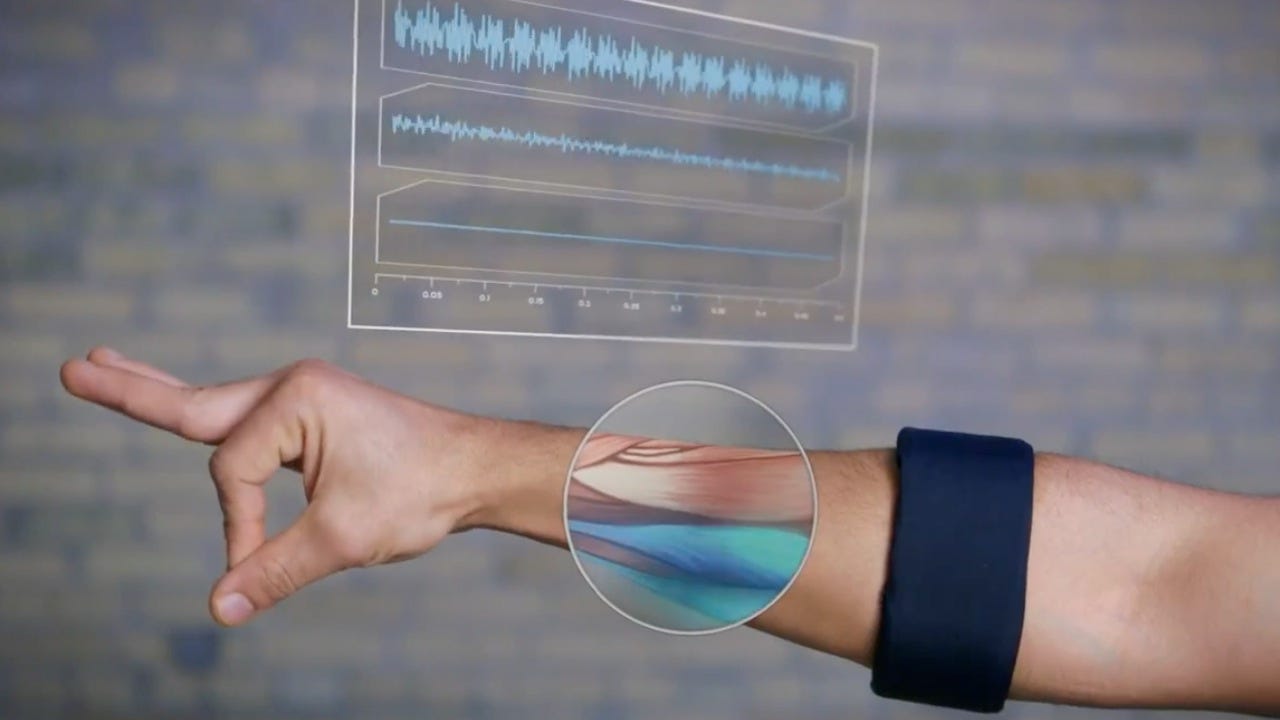Thalmic Labs is on verge of introducing a revolutionary new gesture control wearable tech product

Thalmic Labs is in the middle of a maelstrom of activity.

It raised $120 million in September of this year, built a new factory, has ben hiring like crazy and creating all kinds of buzz about a revolutionary new product that people say will radically change the way we engage with virtual reality, gaming, smartphones, manufacturing or pretty much anything you do that can be replaced with a few subtle finger taps, swipes and gestures made in thin air.
Never heard of Thalmic Labs? It's a company founded in 2012 out of the mechatronics program at the Canadian temple of engineering, the University of Waterloo, by Stephen Lake, Matthew Bailey and Aaron Grant.
To understand the possibilities of what a new product from this company's R&D could bring you, check out the video below that shows you just one application of its old product.
In the video, a person who lost his lower arm to cancer magically moves his prosthetic arm thanks to an incongruous armband worn high up on his arm. The band, called the Myo ($199) contains eight sensors that measure electromyographic pulses in his upper arm -- electric pulses sent there by his brain to move muscles that no longer exist.
These are then transmitted to a computer that studies them and figures out what movement the person is thinking of and then commands the prosthetic limb attached to his skeleton to perform them. (The arm and its functions were developed by Johns Hopkins Applied Physics Laboratory without any input or assistance from Thalmic.)
Now, apparently, Thalmic Labs is using its pioneering work in gesture control -- used to manipulate all manner of things ranging from computers and phones to drones, video games, touch screens, surgical robots, power-point presentations and much more -- to dream up another potentially breakthrough product coming to you by the end of the year.
Unfortunately, we don't know exactly what that is.
Some have tried to guess by dissecting the company's investor profile. In October, for instance, the company announced a $120 million USD ($158 million CAD) Series B round led by Intel Capital, the Amazon Alexa Fund, and Fidelity Investments Canada. Now, the Amazon Alexa Fund is squarely focused on voice-control technology which augurs some kind of integration of voice with the Myo.
The Myo armband
Intel's participation --it also invested in Thalmic during the company's first $20 million cash collection round -- makes sense, as the article points out, given that the chipmaker is driving the internet of things (IoT) movement where wearables play a prominent role.
To sum things up, we have the possibility of gesture control, voice control and IoT functionalities all rolled into one product based on these reports. For the impatient, however, there is this tantalising, concrete glimpse of what that device may be, based on the unverified, digital rumour mill backed by some nifty detective work.
This website says that according to an "anonymous source claiming to have links with a former Thalmic Labs employee the company has hired people from the VR and human computer interaction spaces," and that the new device is a wristband version of Myo that is now able to pick up the minutest of finger movements including tapping.
Roadtovr has even cleverly dug up a patent filed by the company last year that pretty much spells out the functions of said device with detailed diagrams but the site's efforts to verify this via the company hasn't met with luck so far.
Myo was nothing short of revolutionary when it came out in 2014 and still is. Still, while its $7m in pre-orders may sound impressive it only shipped 50,000 units, not exactly a resounding hardware success as far as numbers go. But there's a reason for that, say industry observers.
When the Myo first came out, a consumer-driven VR industry was still in its infancy, drones were not an impending reality as they are today and there wasn't a proper vision to integrate the device into everyday computing. Which is why the device found most of its fans among what soon became a passionate developer community.
Today, all that has changed. VR and drones are steadily being integrated into our consumer lives and, as this article points out, even an industry such as manufacturing could benefit hugely from a gesture control device where touching screens with bulky gloves or operating a control panel while engaged in another process is virtually impossible. A sensor-impregnated wrist-band that allows for tapping and swiping as well as voice control could change all of these industries dramatically.
Towards that end, Thalmic Labs has relocated its manufacturing from China to its place of origin -- the bustling tech town of Waterloo, a 45 minute drive from Toronto -- where it transformed a former cabinet making shop that faded away much like most other post-war industries. Here, engineers and captains of supply chain mingle with each other and with with factory hands, ostensibly unleashing crucial synergies.
The company has also opened an office in San Francisco and is on a furious hiring binge, snapping up people in a range of functionalities, from marketing to engineering to business development.
All of this new momentum, money and space is solely focused towards "re-imagining the human-computer interaction" according to co-founder Lake, where "the lines between humans and digital technology become increasingly blurred."
Making a success out of a hardware product is a much trickier game than most other tech ventures and despite the prowess of the admittedly uber-cool and useful Myo, its next-gen avatar is by no means a pre-ordained success.
Still, considering that Intel and Amazon immediately coughed up the bulk of the company's last investment round of $120 million after being shown a prototype a few months ago chances are that Thalmic may well be on the cusp of introducing the next big sensation in wearable tech.